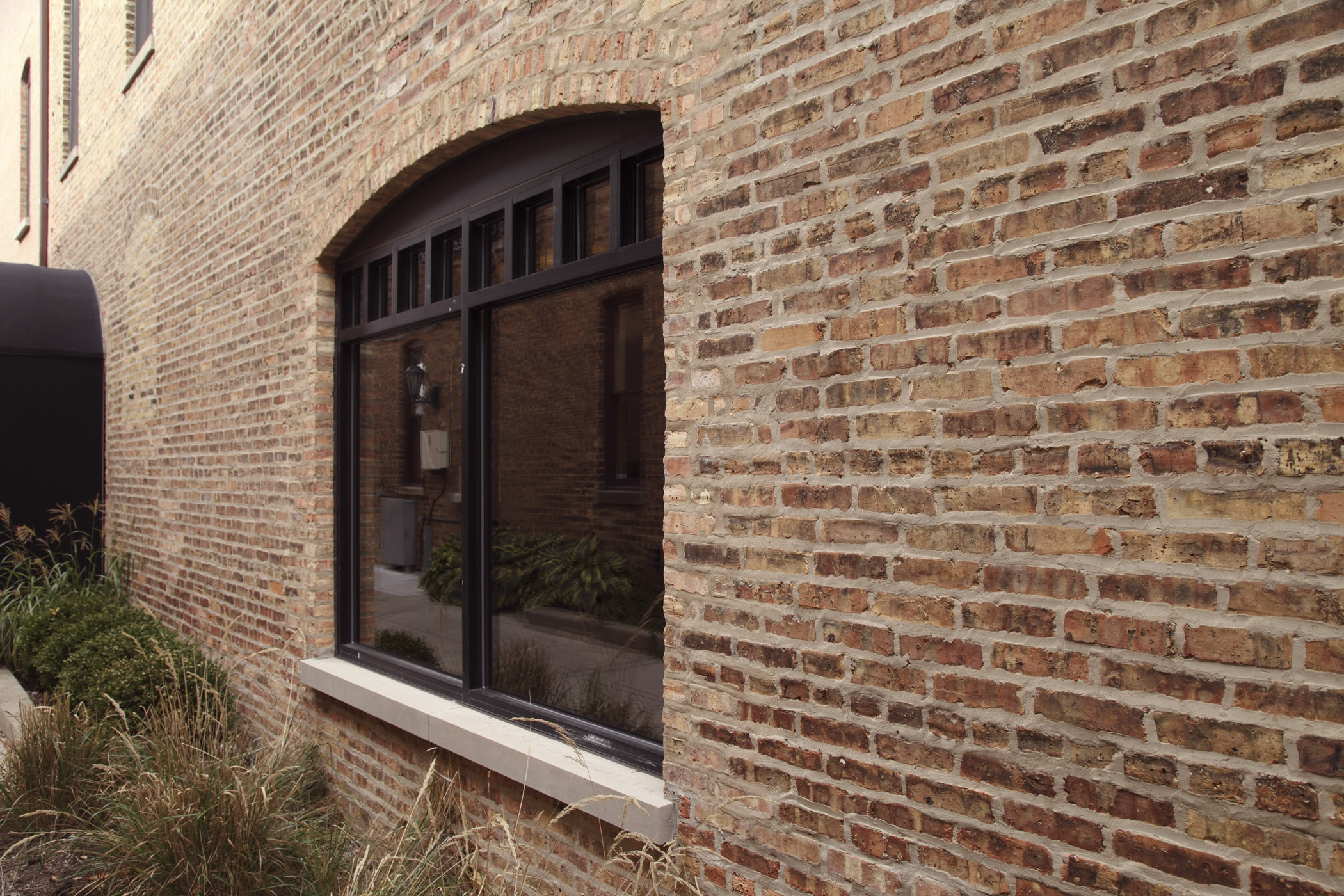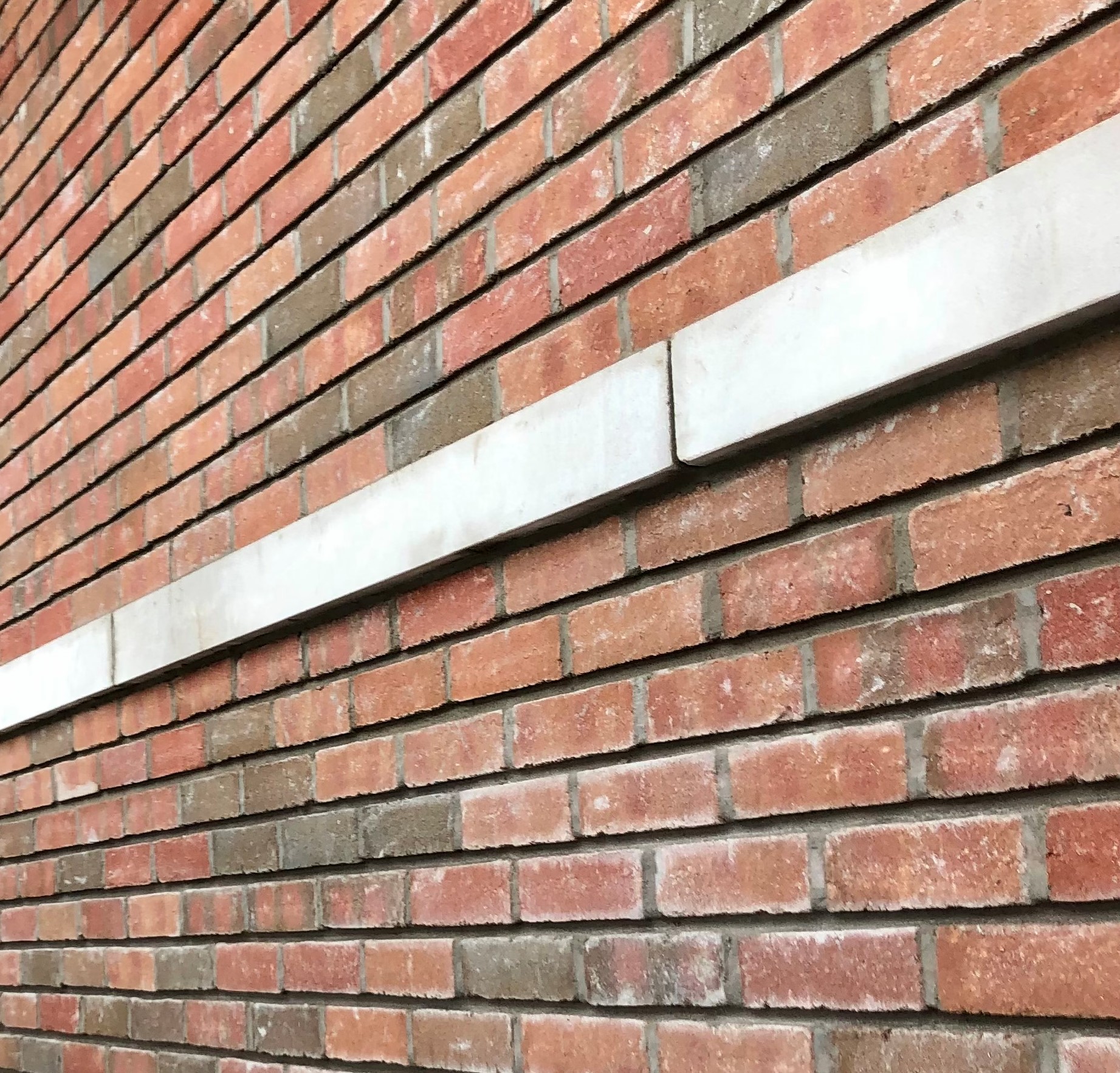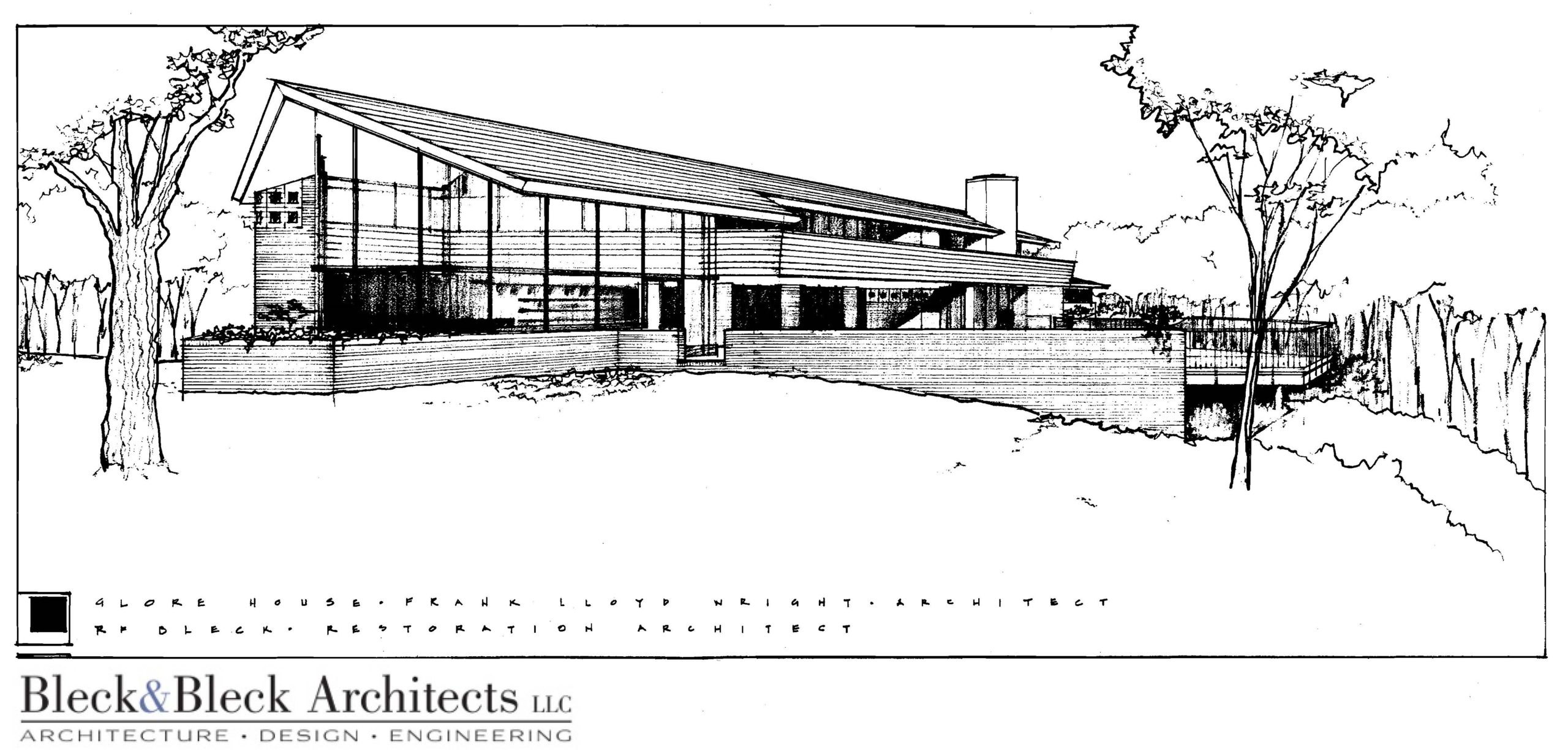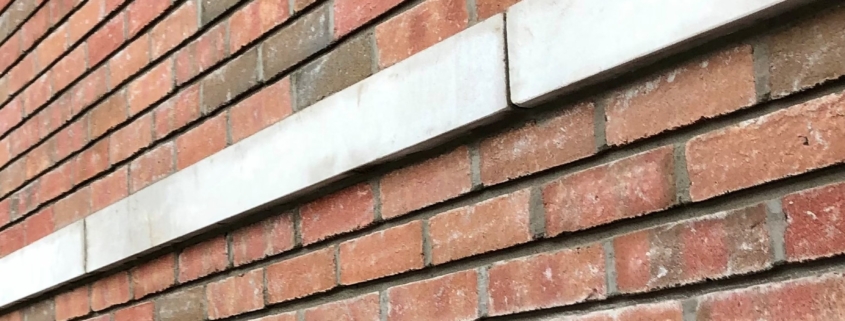Exploring Masonry Mortar Joints

Flush Struck Brick Mortar Joints
As architects, we could wax poetic about masonry mortar joints and the difference they make in the appearance of a brick or concrete block wall. In fact, on a recent municipal project for the Village of Grayslake, IL, we revisited several of our favorite joints in new exterior brick walls.
Here’s a quick primmer on masonry mortar joints for those, like us, who love a beautiful masonry wall.
What are masonry mortar joints?
Masonry units, such as clay brick and concrete block, are held together with the use of mortar between the joints. The mortar not only sticks the masonry units together; it also works with the masonry units to form an air and water barrier to the weather. In our local Midwestern climate, we pay special attention to weather resistance in exterior applications. In milder climates and interior applications, weather resistance may not be as critical to our building designs.
Masonry joints are rather small, usually around 3/8’, and can be applied horizontal or vertical. The composition of the mortar itself is determined by the desired strength properties and appearance. Masons hand apply the mortar using a trowel to the masonry to form a horizontal bed. The unit ends are buttered with mortar before final placement in the mortar bed. The vertical ends are called head joints. Depending on the desired appearance and weather resistance, the mason will finish the joints by striking, raking, or tooling the joint. The mortar is allowed to cure before final cleaning. Careful workmanship and proper construction practices will ensure an attractive, weather-tight wall.
What is mortar made of?
The mason mixes water, cement, lime, and sand to make mortar. Sometimes we want the mortar to match or contrast with the masonry units themselves. In this case, we also include pigment in the mixture specification. The proportion of these elements can vary, depending on the required strength performance (bonding, compression, flexure) properties.
Mortar for unit masonry is classified by the American Society for Testing and Materials (ASTM) specifications. Type N is general-purpose, medium strength (min of 750 psi) mortar and the most commonly used because it matches the strength of most masonry units. It is used in reinforced interior and above-grade exterior normal load-bearing walls.
What are the types & finishes of masonry mortar joints?
There are two types of joints:
- Bed joints
Bed joints are horizontal mortar joints between two masonry units. The most common type is a full joint that covers the top of the masonry unit. Another less common type is a face shell joint at the face of the unit.
- Head joints
Head joints are vertical mortar joints between two masonry units.
There are a variety of types of joint finishes. We choose joint finishes depending on the desired wall appearance and weather-tightness.
Joint Finishes
- Concave Joint – Standard concave curved joints are the most durable and effective at shedding water.
- Vee Joint or V Joint – An ornamental joint that is v-shaped and the joint directs water away from the masonry.
- Weathered Joint – A weathered joint is sloped from the bottom to the top for a neat appearance.
- Struck Joint – A struck joint is sloped from the top to the bottom allowing water to rest on the masonry.
- Flush Joint – A flush joint is flush with the face of the masonry unit and this finish is often used when the masonry surface will be plastered or painted.
- Raked Joint – A raked joint is recessed within the brick for a strong emphasis. Because it exposes the ends of the masonry, it is usually used on interior walls or exterior walls with a protective overhang.
- Extruded Joint – An extruded joint is created when the masonry unit is placed and the mortar is squeezed out for a rustic appearance. This ornamental joint is typically used in interior applications.
Joint finishes can be mixed in a wall to create some amazing effects. The skills of the installing mason will also have a big impact on the end product. For example, in the photo below, these flush-struck head joints and raked bed joints look awesome! Old tricks never get old – this is a Tom Bleck special. We’d like to see this on all our brick jobs that have the weather protection of overhangs.

Example of raked bed joints with flush struck head joints – Bleck & Bleck Architects, LLC
Frank Lloyd Wright, Perkins & Will, and other Chicago architects did this back in the day. This Prairie Style trick accentuates the horizontal plane. One nice example is The FLW Glore Residence in Lake Forest. We did some work on the house back in the 80s and Bob did a really cool pencil rendering (see below). There’s no doubt that masonry mortar joints make a big difference in the appearance of brick and block walls.

@Bleck & Bleck Architects Rendering of Frank Lloyd Wright Glore House



